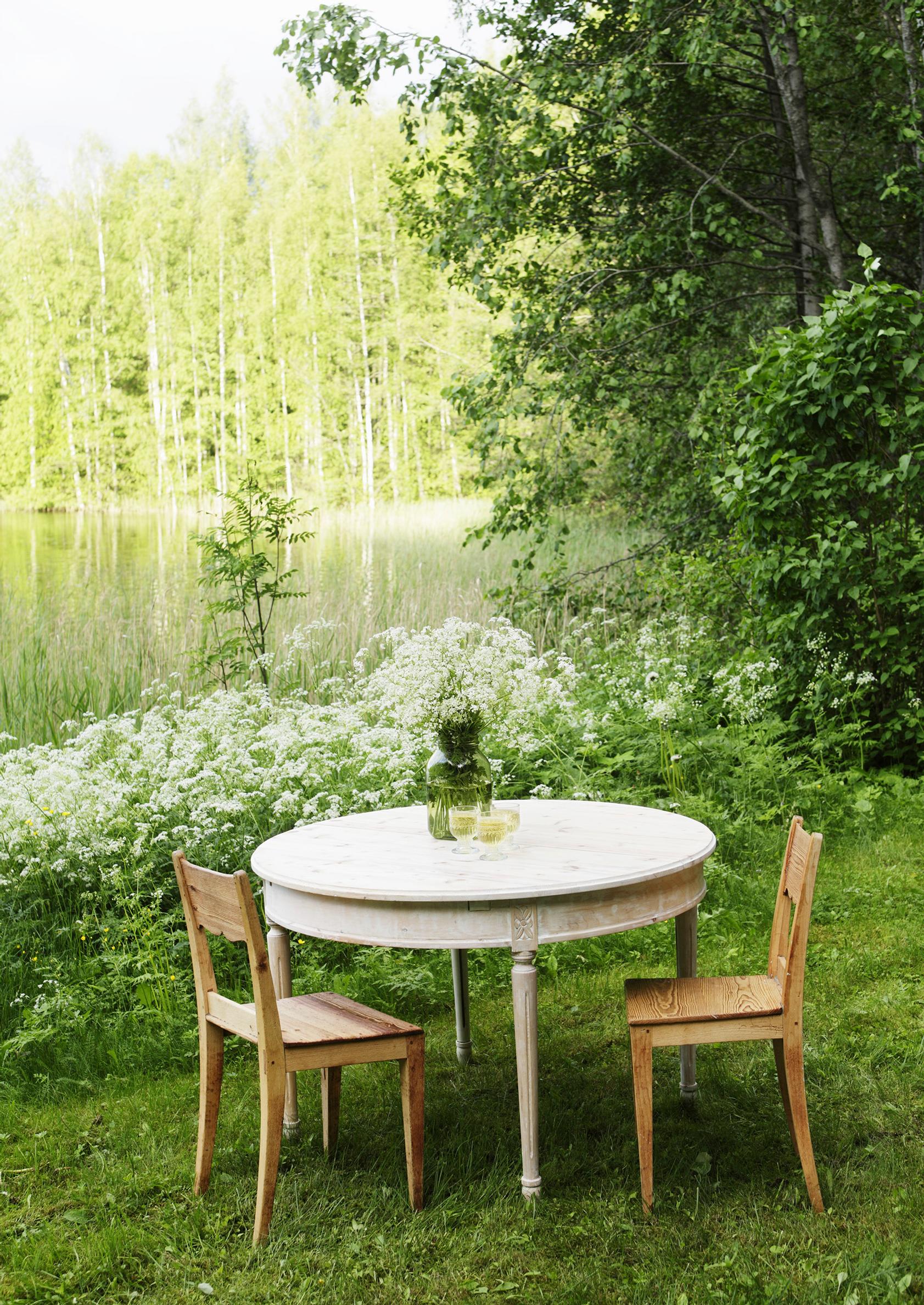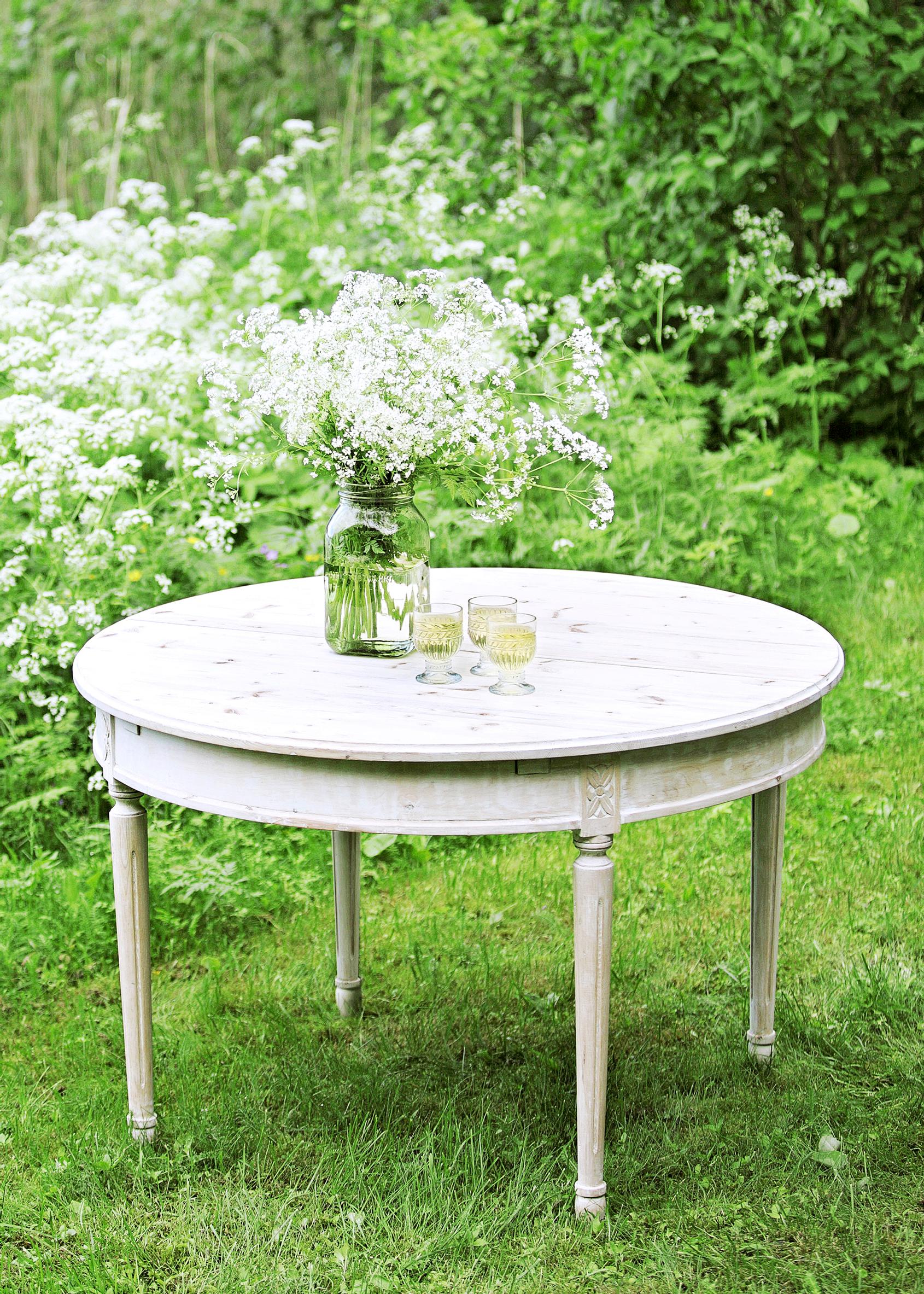
Give your table a charmingly worn makeover
In just a day, you can turn a glossy, ornate dining table into a rustic, charmingly worn piece.
You can transform a decorative table into a more understated piece that better suits your existing furniture. Begin by removing the paint, any gilding, and other decorative paintwork. If you like a worn wood look, leave some paint partially visible. Then protect the surface with a silky finish by applying clear antique wax, which beautifully highlights the wood grain.
Removing paint is messy, dusty, and has an unpleasant odor, so it’s best done outdoors on a dry day. Protect your eyes, hands, and breathing from heated paint fumes, paint remover, and flaking paint chips.
Materials you’ll need:
- heat gun
- metal scraper
- paint remover, for example Liberon’s Stripper
- 80- and 180-grit sandpaper and/or a sander
- knife and paintbrush
- clear antique wax, for example Liberon’s Black Bison Antique Wax
- white spirit for cleaning the paintbrush
- protective gloves, respirator, and safety goggles
Create a worn tabletop—instructions:

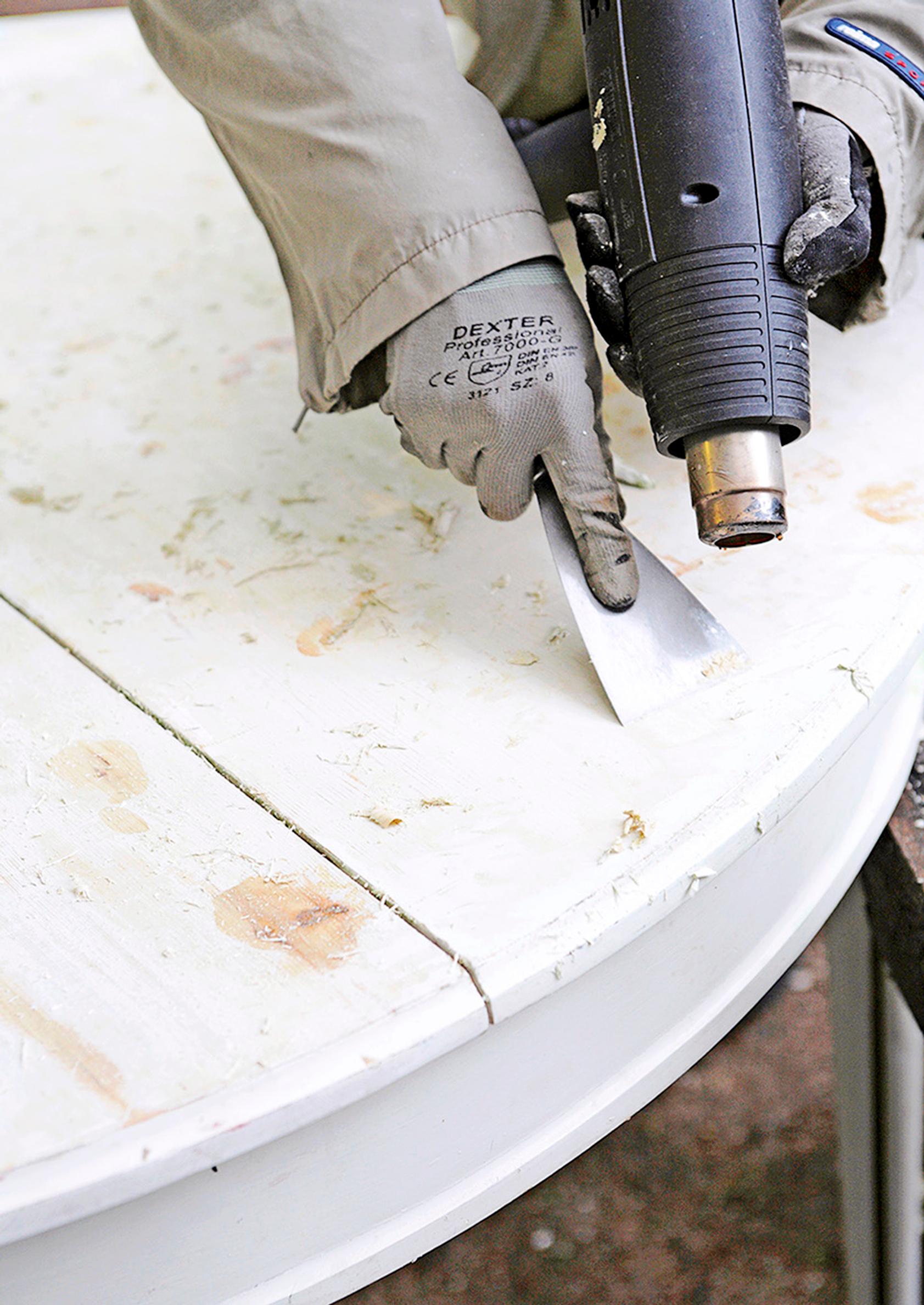
1. Try removing the paint with a heat gun and a metal scraper. Keep the heat gun nozzle about 10 centimeters (4 inches) from the table’s surface. Heat the paint until it bubbles, then push off the softened paint with the scraper. Be careful not to scorch the wood.

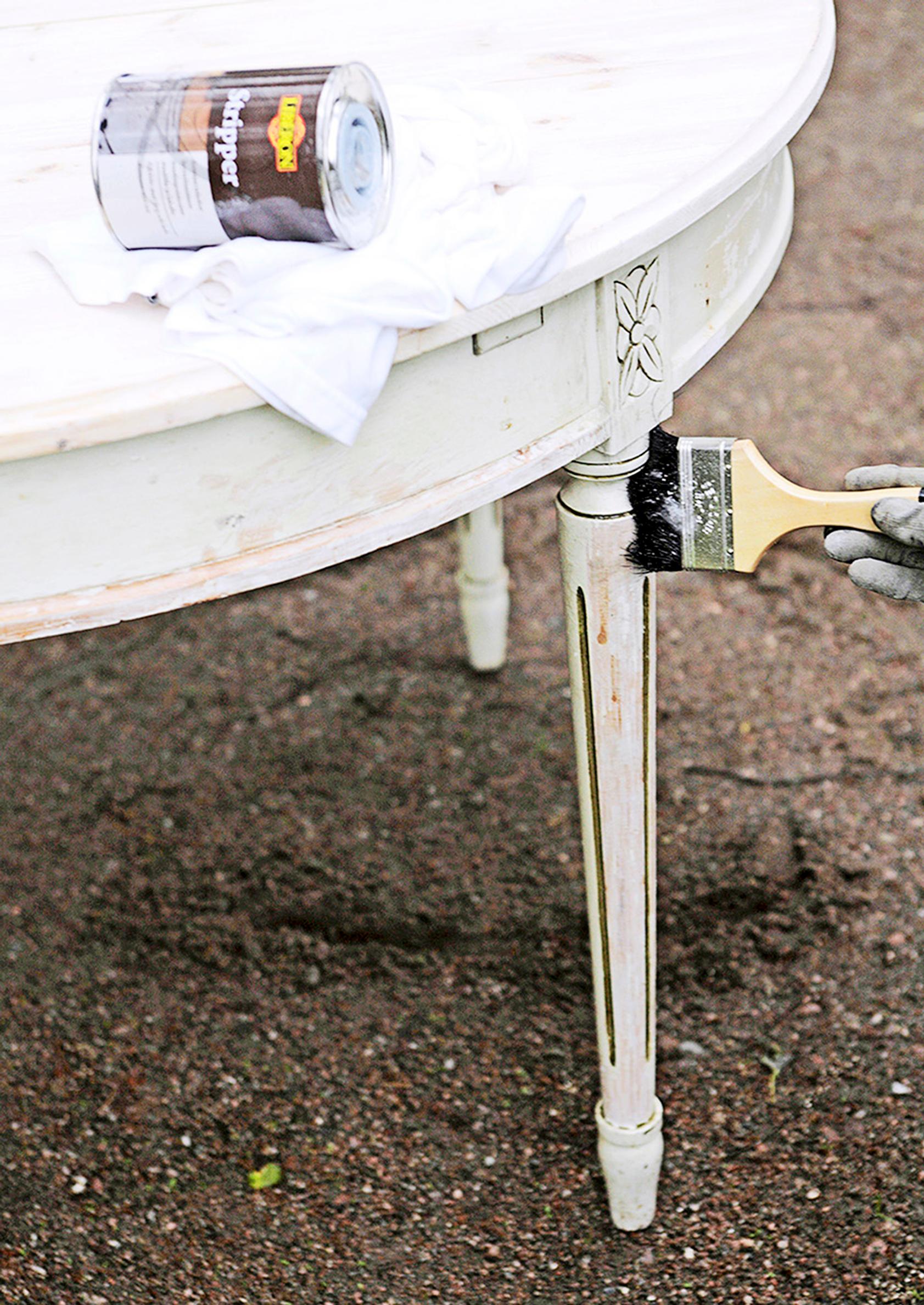
2. If the paint doesn’t come off completely with the heat gun, spread a gel-like paint remover on the surface and let it sit for 30 minutes to an hour. Then scrape away the softened paint with the metal scraper. Wipe the residue from the scraper onto an old T-shirt or rag.

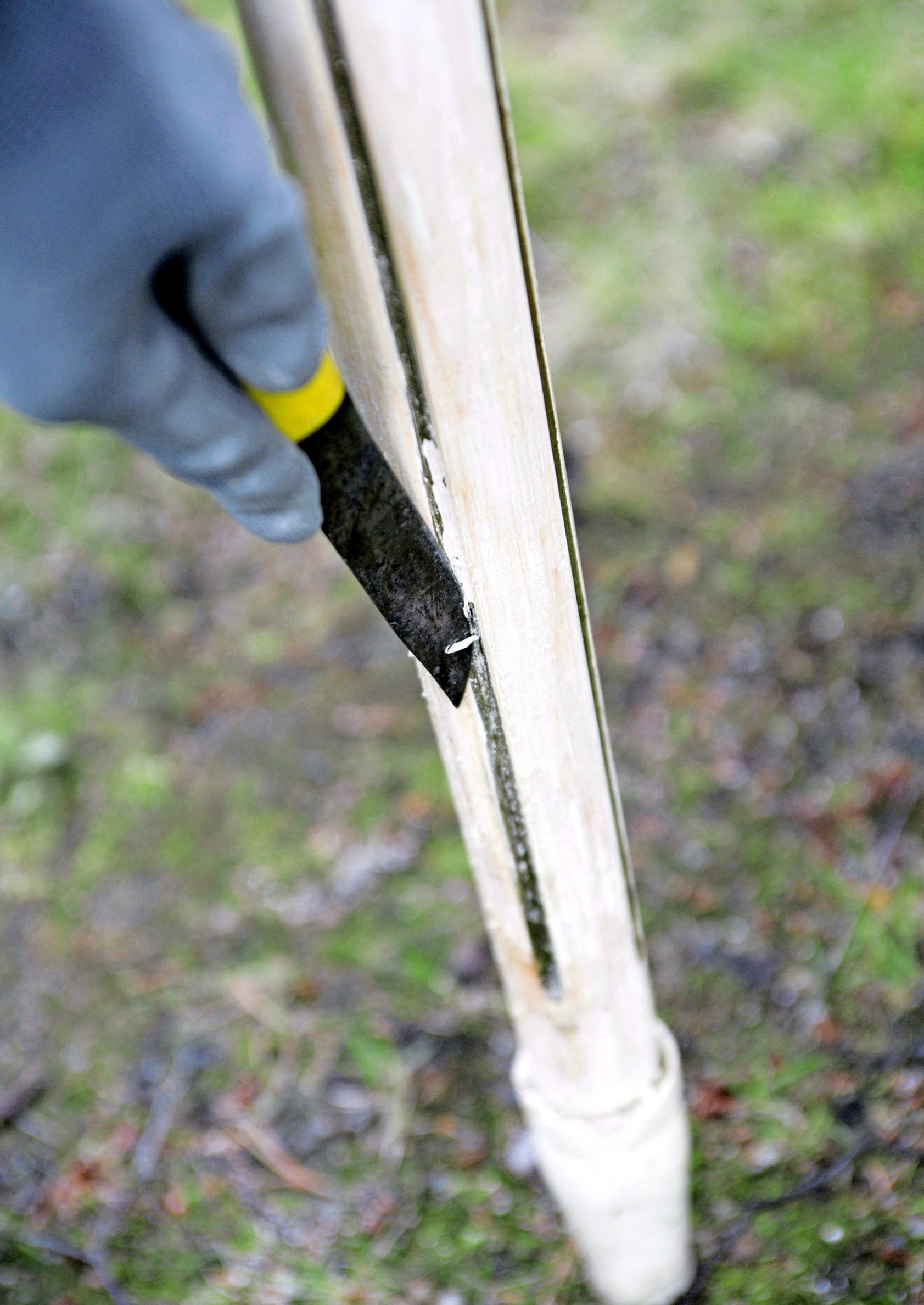
3. Next, tackle the decorative details. Once the paint remover softens the raised patterns and grooves, use a slightly dull knife to scrape away the gilding in each groove. Run the knife along the entire groove, and carve out any gilded paint in the decorative motifs with the knife tip.

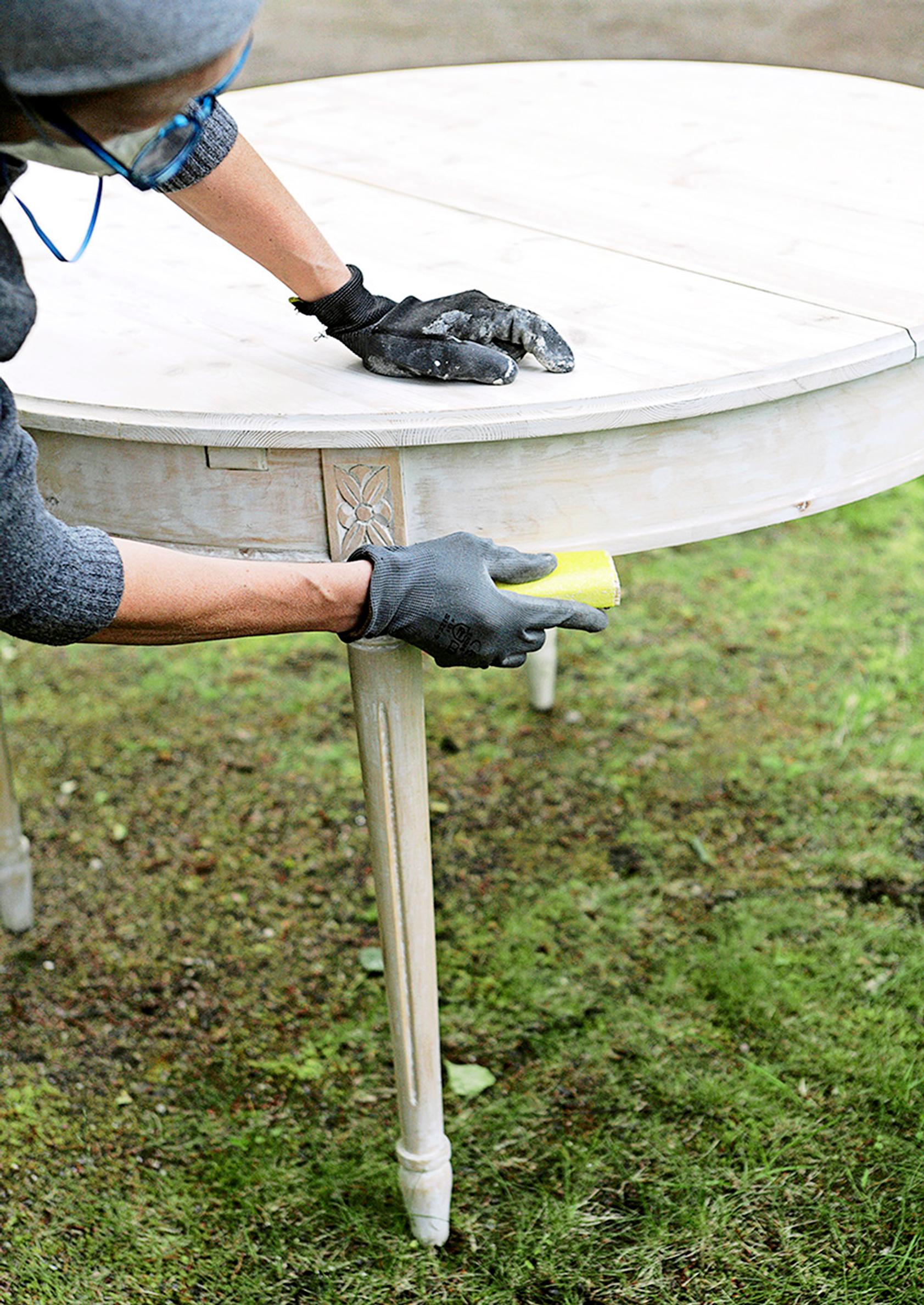
4. Once you’ve removed as much paint as possible, continue by sanding with a sander or by hand. If you prefer, you can leave a thin layer of primer visible.

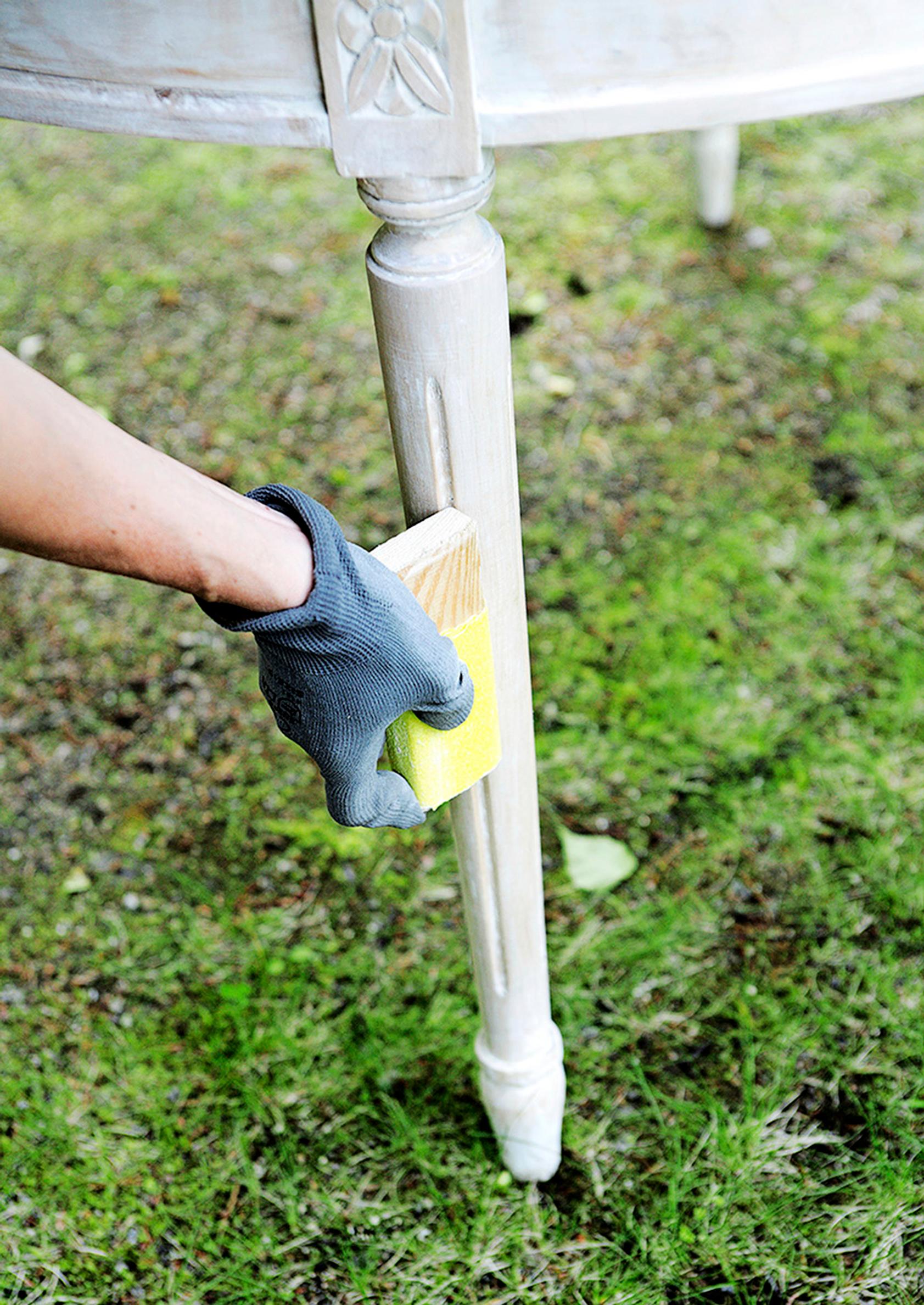
5. Clean any leftover paint from the grooves using sandpaper wrapped around a small wooden block. Start with coarse sandpaper, then move on to a finer grit.

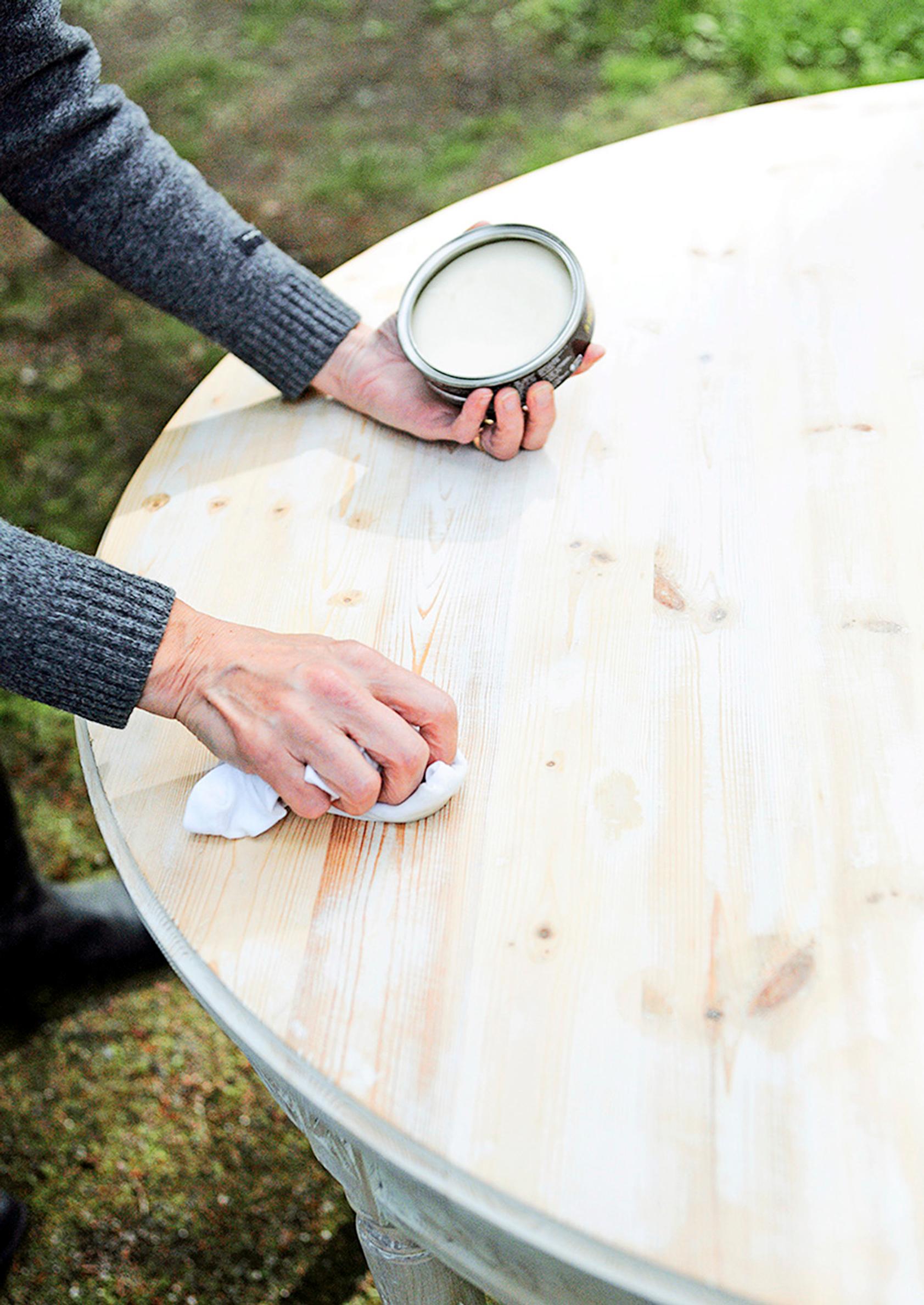
6. Wipe away the dust. Use a cloth to apply clear antique wax over the entire table. The wax protects indoor furniture from dirt. When it’s dry, repeat the treatment. Finally, buff the surface with a clean cloth.

